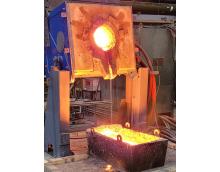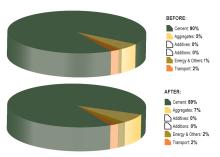Cement from
In 2012, the French construction materials group ran a production test of 10,000tonnes, and further research for the industrialisation of the product will follow. The Aether project began in 2003 as part of an effort by Lafarge to reduce its carbon footprint. So far, Aether clinker is said to have been proven to reduce CO2 emissions by 25% to 30%. The project received support from the
Aether clinker is described as being lighter and less hard, which means it requires less energy during the grinding process. The furnace need only be at 1,300°C rather than at 1,450°C to 1,500°C, which cuts CO2 emissions by 15%. Neither alite nor aluminate is used. The product is applied like traditional cement and is said to have the same properties as Portland cement when hydrated. Lafarge says it is continuing its research to reduce its carbon footprint and could use microalgae to collect carbon gas that leaves its furnaces.






